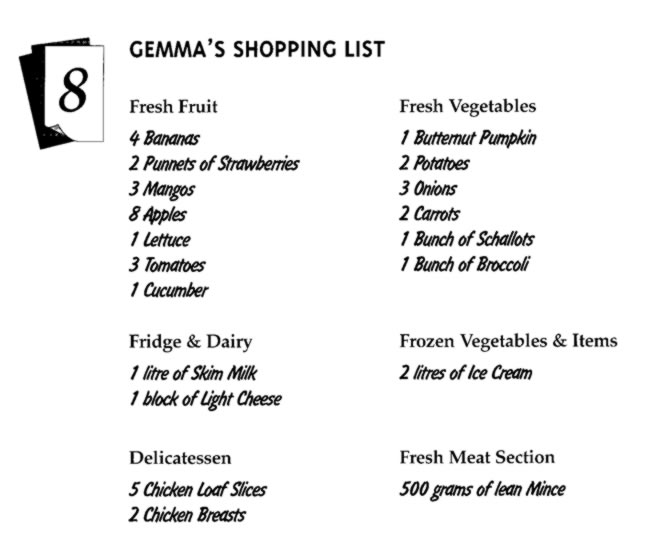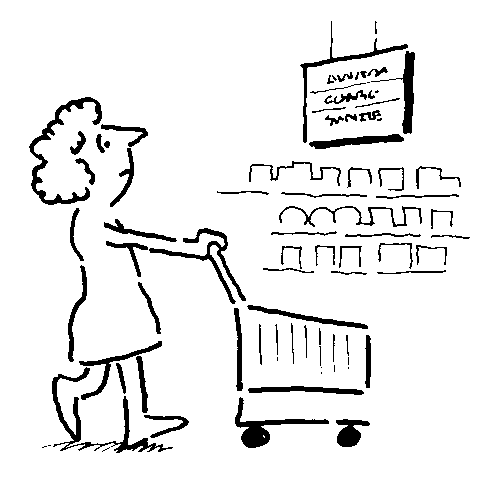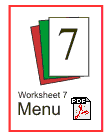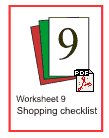- TOOL KITS
- A. The NEXT Step
- B. Promoting Independence
- C. Phone Apps
- D. Return to Work
- E. Motivational Interviewing
- F. Paediatric Brain Injury Rehabilitation Resources
- a) Introduction
- 0. Introduction
- 1. Working together promoting independence
- 2 . Using this kit
- b) Issues, goals, action
- 3. Identifying issues W
- 4. Setting goals W
- 5. Making goals happen W
- 6. Monitoring progress W
- c) Strategies Myself and my relationships
- 7. My behaviour's changed W
- 8. Thinking
- 9. Relationships W
- 10.Conversations
- Managing memory, money and time
- 11. Remembering information and messages
- 12. Finances and handling money W
- 13. Managing time W
- Household tasks
- 14. Food and shopping W
- 15. Food and meals W
- 16. House keeping
- 17. Laundry
- Getting around
- 18. Public transport W
- 19. Accessing the community
- Life tasks
- 20. Self care
- 21. Fitness
- 22. Leisure
- 23. Employment
- 24. Continue learning
- 25. Health and well-being
- Emergencies
- 26. Emergencies
14. Food and shopping
How can I know I will always have food to cook my own meals?
Everyone needs to eat to survive. When you are responsible for planning and preparing your own meals it can be a real chore if you haven't done it properly. The following topics should ensure all meals you prepare are successful!
1. How do I plan for what meals I am going to eat?
The answer is to develop a menu plan.
2. How do I prepare a comprehensive shopping list?
Think about categories of food.
3. What do I need to consider when I go shopping?
Know what you have to do, when and where you are going to do it before you go.
How do I plan for what meals I am going to eat?
I never know what I am going to eat. How can I organise to have the right food in the house each week?
By following a menu plan you will always know what meals you are going to prepare. If you use your menu plan as a basis for the shopping list you will always have enough food for each daily meal.
A menu plan identifies meals you want to eat over a week. Menu planning needs to be done for breakfast, lunch, dinner and snacks between meals. A menu plan chart is one way to keep track of your weekly meals.
If you prefer to decide on what to eat on the day, you can write a list identifying seven breakfasts, seven lunches, seven dinners and snack foods. You can then select one at each meal time and cross it off as you go.
Strategies for action
Follow these steps to identify your menu plan using the menu plan chart. Refer to Worksheet 7.
Step 1: Write what you want for breakfast each day in each breakfast row. This may be toast or cereal or both or a hot breakfast or a combination.
Step 2: Write down in the lunch row what you would like to eat for lunch. This may be a sandwich or noodles or left overs from the night before. Remember to be specific. For example, if you want a cold meat or vegemite sandwich.
Step 3: Write down in the dinner row what you would like for dinner. If you need some options, look in a recipe book. For example, this may be steak and chips, spaghetti bolognaise or soup.
Step 4: Write a morning and afternoon tea snack for each day. Try to make these healthy foods, like fruit.
Step 5: Place this menu plan chart in a position where you can see it. For example, on your fridge with magnets.
Examples of Gemma's menu plan follow the worksheet.
Who can help me menu plan?
If you are doing this yourself, you can contact the • Brain Injury Rehabilitation Unit and ask for the Occupational Therapist.
If you live with family, friends, or have support worker assistance, they may be able to provide a hand.
Useful resources
Easy Cook Books are available through the Independent Living Skills Project, Department of Food Science, R.M.I.T. See Section D, Appendices for an order form.
Easy Cook Books provide simple recipes in individual steps. There are written instructions and pictures. Equipment and ingredients that will be needed throughout the recipe are listed.
Women's Weekly Cookbooks.
How do I prepare a comprehensive shopping list?
I forget things and buy unnecessary things when shopping. How do I write a shopping list to get enough food for a week?
Using a shopping list:
- stops you from buying extra food
- helps you to stay within your budget
- means you always have what you need to cook
- means you never run out of important things like toilet paper or dishwashing liquid
- helps you get what you need at the shops in an organised manner.
To make a shopping list you have to systematically go through the kitchen cupboards, bathroom, toilet, laundry and under the sink to identify everything you need.
Strategies for action
To prepare a shopping list follow these steps.
Step 1: Use the Shopping List Worksheet 8. The headings will help you put items into similar groups or types of food.
Step 2: Identify what food you need to buy. Refer to your menu plan if you have made one. Write down the amount and type of food you will need to buy for each meal. If you have chosen a meal with a recipe, look at the ingredient list. Check your cupboards. If you don't have it, write it down under the shopping list heading
Step 3: Check your bathroom cupboards for personal items. For example, soap, shampoo, conditioner, deodorant, razors, shaving cream, feminine hygiene products. Add these to the shopping list under toiletries.
Step 4: Check your laundry cupboard for household items. For example, toilet paper, washing powder, disinfectant, toilet cleaner and freshener, creme cleanser. Add these items to the shopping list under cleaners.
Step 5: Check under your kitchen sink for more household items. For example, dishwashing liquid, sponges, steel wool, gloves. These items also go under the cleaners heading on the shopping list.
Step 6: Look over your list and see if there is anything you have forgotten. Once you have done this you are ready to shop!
Gemma's experience
An example of Gemma's shopping list follows. You can see she has used Worksheet 8 and her menu plan to make her shopping list.
Worksheet 9 is an example of the shopping list Gemma developed to fill her pantry when she first moved in

Worksheet 10 is a list of the different appliances and items Gemma needed to get when she first moved into her new house. Worksheet 10 can be used as a checklist to help you identify what you may need to get yourself set up in your own home.
Who can I ask for help with my shopping list preparation?
If you are doing this yourself, contact the Brain Injury Rehabilitation Unit and ask for the occupational therapist.
If you live with family, friends, or have support worker assistance, they may be able to provide a hand. If not ask the Brain Injury Rehabilitation Unit.
Useful resources:
If your pantry is bare or you are doing a first shop use the first shop checklist.
What do I need to consider when I go shopping?
How do I do my shopping?
Shopping is a big activity that requires a lot of planning and effort. Unless you plan for your shop, it is very easy to spend a lot of money and not purchase what you want. People pick up bits and pieces every day. It is a better use of time and energy if you do your main shop once a week or once a fortnight. You're also then not tempted to buy things you don't really need.
Helpful hints
It is good to plan to do your shopping on the day, or day after, you have been paid. Then you know you will have enough money for food. This means you will have food in the cupboard and fridge until you next get paid.
To make sure you buy what you need as a priority, you need to have a systematic approach and organised list. For strategies to write a comprehensive shopping list see Section 14 Worksheet 8.
Strategies for action
To make your shopping a success, follow these steps:
1. Make sure you have prepared a comprehensive list.
2. Identify when you are going to do the shop. Depending upon the time of day, shopping centres are more or less busy. Choose a time most appropriate to your needs. If you don't like crowds, shop in the early morning when the shops first open and there are less people.
3. Identify where you are going to shop. Consider the:
- closest shopping centre
- proximity to the supermarket from parking spaces
- whether all the different shopping needs are catered for at that centre. For example, if you combine your banking on your shopping day or you need to purchase a newspaper or stamp consider if there is a newsagent and post office there also.
4. Identify how you are going to get to and from the shopping centre. Consider the following:
- will you use public transport?
- do you have your own car?
- do you need support to push the trolley?
- will you be bringing the groceries home with you?
5. Make sure you have enough money to pay for your shopping. Decide if you are going to use EFTPOS, pay by credit, cheque or cash. If you are paying by cash, make sure you have some. If you need to get cash and are unsure how to complete banking activities refer to Section 12 Finances and handling money.
6. When you have thought about all these things you are ready to go shopping! Using your shopping list that is grouped into different food types, work out where you need to go in the shopping centre. Layout maps are available from most of the large supermarkets. Get one and stick it on the fridge for when you write your list. Then you can write it in the order that the items are in the store.
Helpful hints

Before you go shopping you can:
1. Visually try and remember what your shopping centre looks like and run through in your mind where you need to go
2. Use a map to help you remember where everything is.
When you are in the shop, you can:
1. Use your map to find your way around
2. Use the store directory
3. Use the overhead aisle signs in the supermarket to know which aisle to go down.
Remember to cross each item off your shopping list as you collect it. This will enable you to get one of everything you need and not double up!
If you go shopping for the same items each week, you can develop a shopping checklist. This checklist can be placed in a plastic sleeve. Using an overhead pen you can cross off items as you collect them or if you don't need them in the first place. Then upon return from shopping, you can use a wet cloth to wipe the overhead pen off the plastic sleeve and your checklist is ready for use the following week.
Gemma's experience
Gemma lives on her own about ten minutes from the local shopping centre. Gemma does her own banking and bill payment on the same day she does her shopping. Gemma doesn't drive and works with a paid support worker (who has a car) each week to do her shopping. Gemma pays cash at the cashier in the supermarket. She then knows she has stayed within her shopping budget.
Gemma prepares a menu plan and shopping list before her worker arrives. Gemma's worker drives to the shops and assists Gemma push the trolley when she gets tired. Gemma works to a very tight budget so she has to stick to her list. Gemma uses her shopping list as a checklist and crosses items off as she collects them. She says this means she knows what she has to get.
Gemma uses the overhead aisle signs to help her know what to look for in each aisle. Before she goes down the aisle she looks at the overhead sign and then goes through the shopping list.
Gemma works from one side of the supermarket to the other. She says this helps her to be organised. She then knows where she has and has not been. Once Gemma has finished her grocery shop she goes to the checkout and pays cash. Her worker then assists her get the groceries to the car and home. If Gemma's worker is not around she organises for home delivery. She then meets her groceries at home.
Gemma does any other business at the shopping centre before she does the grocery shop. Otherwise the groceries are too heavy to carry around.
Who can I talk to about my shopping?
Brain Injury Rehabilitation Unit occupational therapists
Family or support workers who can contact the Brain Injury Rehabilitation Unit occupational therapists



